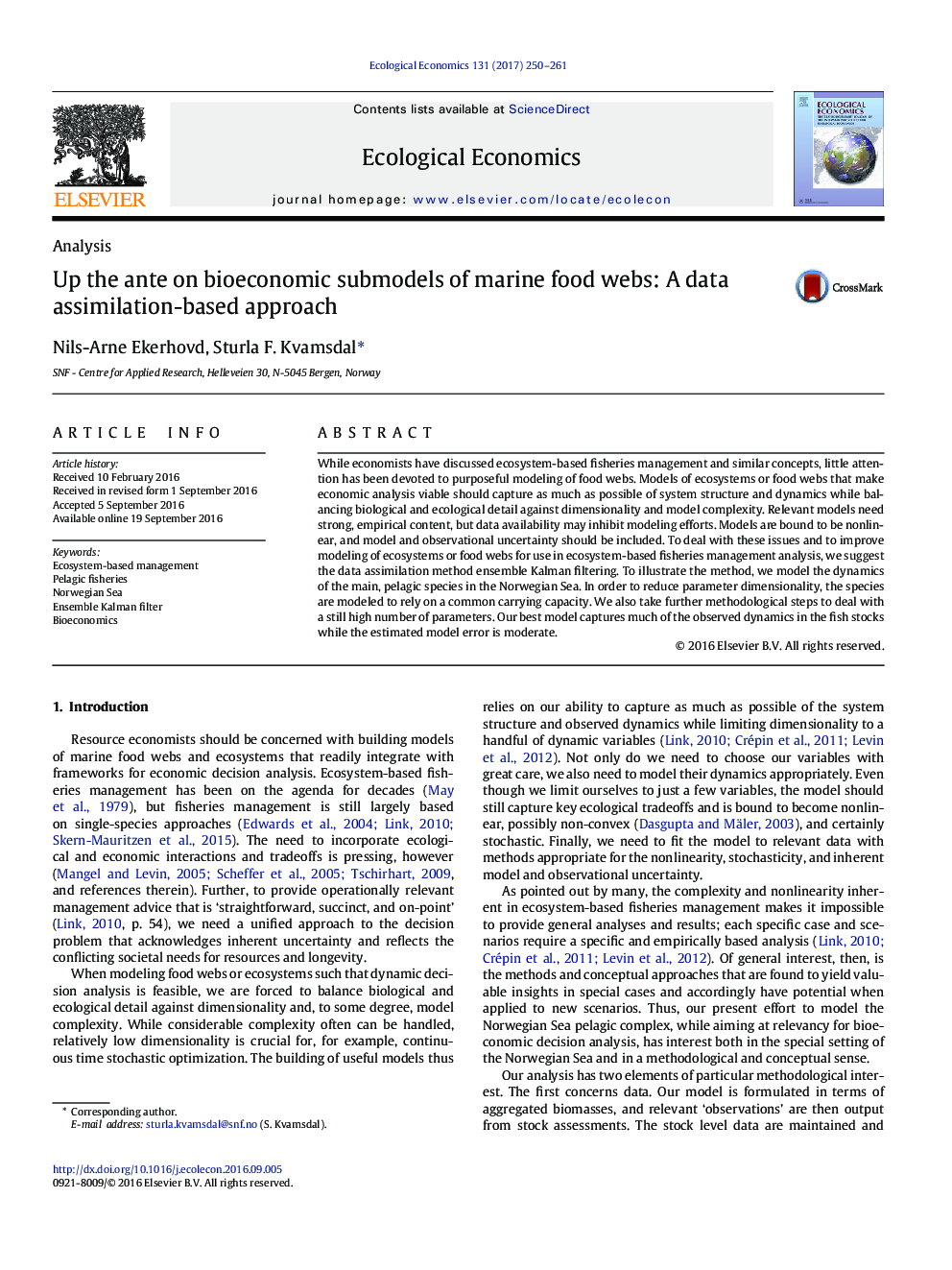| Article ID | Journal | Published Year | Pages | File Type |
|---|---|---|---|---|
| 5048873 | Ecological Economics | 2017 | 12 Pages |
â¢Modeling of Norwegian Sea pelagic complex for bioeconomic analysisâ¢Balance ecological detail against dimensionality and model complexityâ¢Ensemble Kalman filter applied to fit foodweb model to ecosystem data
While economists have discussed ecosystem-based fisheries management and similar concepts, little attention has been devoted to purposeful modeling of food webs. Models of ecosystems or food webs that make economic analysis viable should capture as much as possible of system structure and dynamics while balancing biological and ecological detail against dimensionality and model complexity. Relevant models need strong, empirical content, but data availability may inhibit modeling efforts. Models are bound to be nonlinear, and model and observational uncertainty should be included. To deal with these issues and to improve modeling of ecosystems or food webs for use in ecosystem-based fisheries management analysis, we suggest the data assimilation method ensemble Kalman filtering. To illustrate the method, we model the dynamics of the main, pelagic species in the Norwegian Sea. In order to reduce parameter dimensionality, the species are modeled to rely on a common carrying capacity. We also take further methodological steps to deal with a still high number of parameters. Our best model captures much of the observed dynamics in the fish stocks while the estimated model error is moderate.
